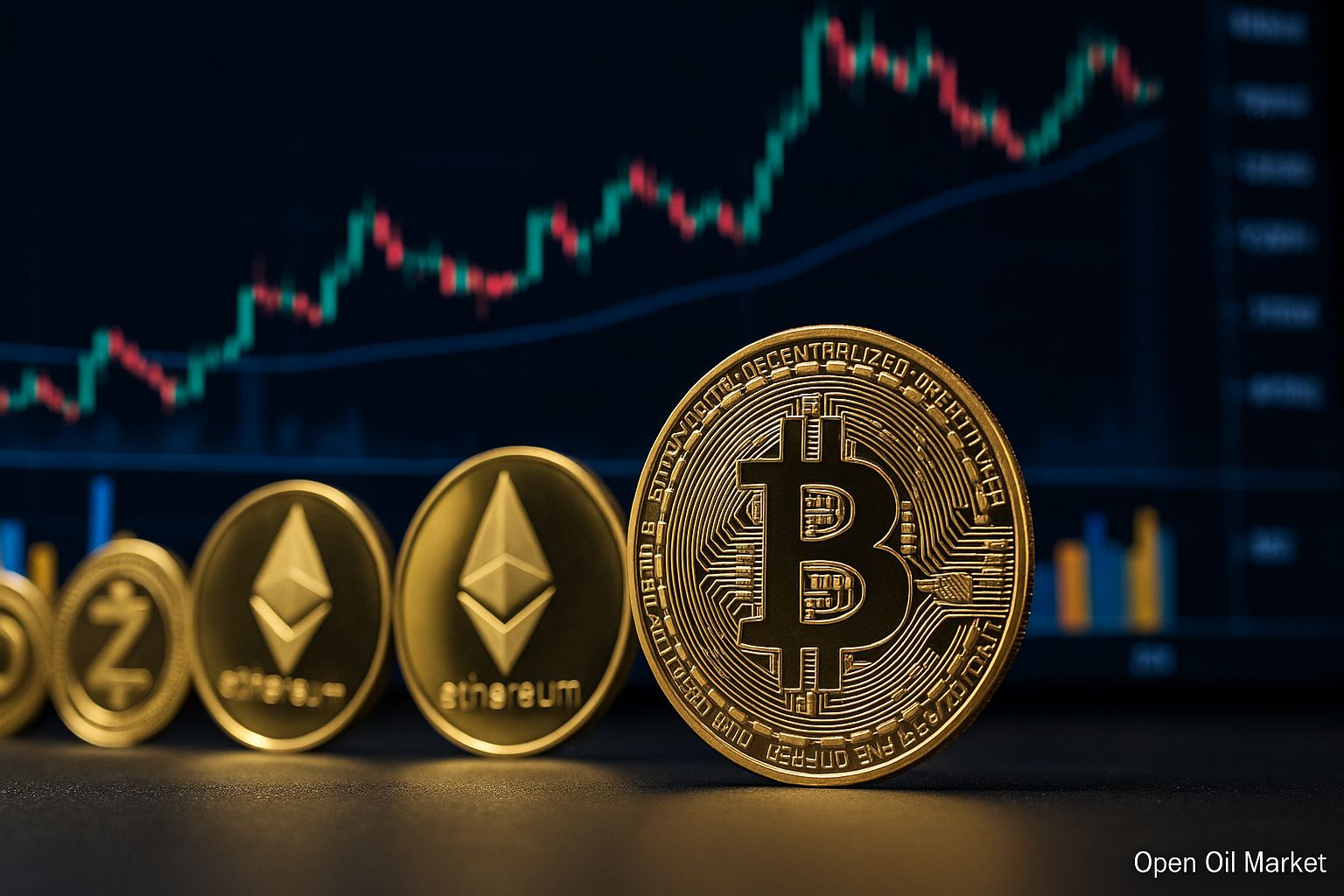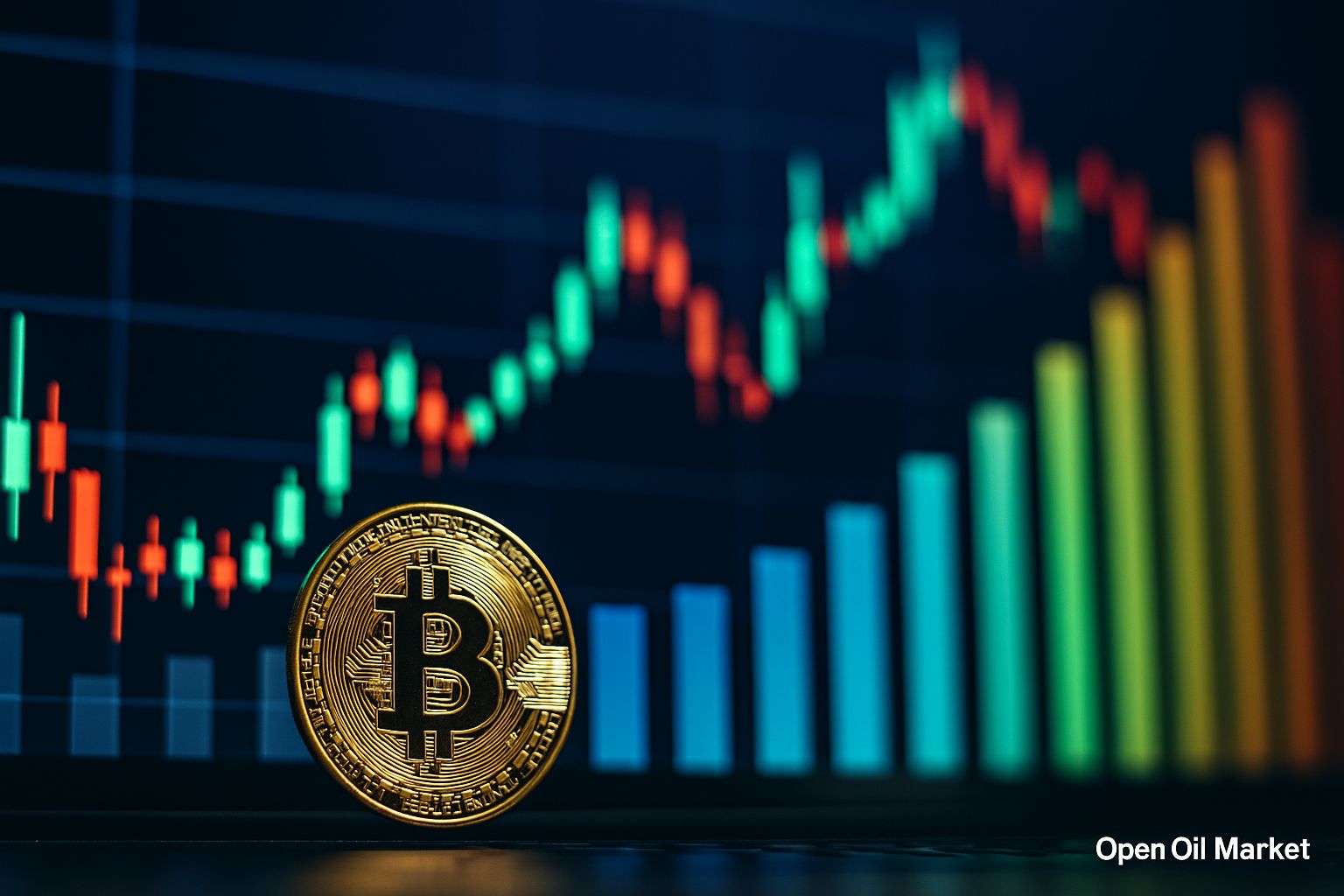
Cryptocurrency Overview as of November 1, 2025: Bitcoin Stabilizes Around $110,000, Ethereum Prepares for the Fusaka Upgrade, Altcoins Exhibit Mixed Dynamics. Comprehensive Analysis of the Digital Asset Market.
As of the end of October 2025, the global cryptocurrency market capitalization stands at approximately $3.7 trillion, with Bitcoin trading around $110,000. In October, the BTC price fluctuated between $106,000 and $110,000 after reaching an all-time high of over $126,000 at the beginning of the month. Analysts surveyed warn of high volatility and the potential for mixed movements: for instance, one leading commentator estimates the range for Bitcoin at the beginning of November at $108,000 to $120,000, with the possibility of short-term corrections and attempts to breach these levels. Simultaneously, several major altcoins are showing divergent dynamics: Ethereum remains in the $3,800 to $4,000 corridor, while the privacy coin Zcash has shown phenomenal growth — in just two months its price has risen nearly 900%, exceeding $375.
Federal Reserve System and Macroeconomics
In the United States, the Federal Reserve concluded its October meeting with another reduction of the benchmark rate to 3.75–4%. However, Fed Chair Jerome Powell indicated that a further reduction in December is not guaranteed. These remarks, coupled with an extended government shutdown, heightened investor uncertainty: Powell's statement triggered a roughly 2% drop in Bitcoin's price, and over the course of the week, more than $600 million exited from spot BTC ETFs. As a result, amid these developments, BTC's price fell below $108,000, but by the morning of November 1, the price returned to around $110,000.
Global Events and Geopolitics
Investor sentiment is also affected by global events. For instance, the meeting between U.S. and Chinese leaders ended without a joint communique, which was viewed as a negative signal: despite agreed tariff reductions, the lack of a final statement diminished optimism in the markets. In Asia, central banks maintain a hawkish stance: the People's Bank of China again designated stablecoins as a systemic threat and has continued to ban cryptocurrency activities since 2017. In contrast, Japan launched the first yen-backed stablecoin, JPYC, under new regulations in October 2025. These examples underscore a global divergence: some countries tighten control while others support innovation.
Key Altcoins and Technological Upgrades
In addition to BTC, there is a growing interest in major altcoins. Ethereum remains the second-largest cryptocurrency by market cap (~$466 billion) and plays a crucial role as a platform for DeFi and NFTs. Currently, ETH is trading between $3,800 and $4,000, and tech traders are focused on the scheduled Fusaka fork in December. This hard fork aims to reduce fees and enhance network security, potentially boosting demand for ETH in the coming weeks. Among other key projects, Solana has seen significant increases in activity since May, and Binance has announced spot ETFs for SOL, LTC, and HBAR, while the SEC prepares to launch a spot ETF for XRP by mid-November. Such initiatives are generating additional interest in altcoins amid a general recovery in sentiment.
Institutional Flows and ETFs
Institutional demand for crypto instruments remains volatile. Analysts report simultaneous inflows and outflows from Bitcoin ETFs in recent weeks, but the overall trend has put downward pressure on prices. Meanwhile, successful launches of new products have been noted: spot ETFs for SOL, LTC, and HBAR have demonstrated substantial initial inflows, and the ETF for XRP awaits approval in November. Expanding opportunities for institutions helps attract "traditional" investments and provide additional liquidity to the market; however, ongoing disputes regarding the regulation of such funds continue to keep investors cautious.
Cryptocurrency Regulation Worldwide
At the political level, discussions surrounding new cryptocurrency regulations are ongoing. For example, in Russia, the Ministry of Finance and the Central Bank have agreed to regulate cryptocurrency settlements within foreign trade operations, legalizing them under increased oversight from the Central Bank. However, access to crypto investments in the country is expected to be limited — designated for "especially qualified" participants. In other regions, regulators continue to seek a balance: the EU and the U.S. are analyzing the experiences of existing ETFs, while strict regulations remain in place in China (with a ban on mining and trading since 2017). This all illustrates that leading global economies aim to ensure the security of their financial systems while not neglecting to support technological progress.
Top 10 Most Popular Cryptocurrencies
- Bitcoin (BTC) — the first cryptocurrency, leads by market cap (~$2.20 trillion). Considered "digital gold," it is used as a hedge against inflation.
- Ethereum (ETH) — the second largest by market cap (~$466 billion). A platform for smart contracts and DeFi. Prices of ETH have risen in 2025 amid expectations of upgrades.
- Binance Coin (BNB) — the exchange token of Binance (~$149 billion). Used for fee payments and participates in the Binance ecosystem.
- XRP (Ripple) — the token of the Ripple payment network (~$152 billion). Often referred to as the "crypto-gateway" for interbank transactions. Despite disputes with regulators, it maintains widespread popularity.
- Solana (SOL) — a blockchain for high-performance applications (~$104 billion). Attracts developers due to its high speed, being actively used in NFTs and DeFi.
- Dogecoin (DOGE) — a "meme" coin (~$28.2 billion). It boasts a large community and media support (especially from SpaceX founder Elon Musk), remaining popular among retail investors.
- TRON (TRX) — a platform for entertainment and multimedia applications (~$28.0 billion). Promotes its network through BitTorrent services, frequently used in gaming and entertainment projects.
- Cardano (ADA) — a "third-generation" blockchain (~$22.5 billion). Focuses on security and scalability, conducting its technological developments (e.g., Ouroboros).
- Litecoin (LTC) — "the silver to Bitcoin's gold" (~$7.3 billion). Created as a lighter version of Bitcoin with accelerated issuance, often used for testing upgrades (has implemented SegWit, Lightning, etc.).
- Avalanche (AVAX) — a platform for fast decentralized applications (~$7.9 billion). Attracts DeFi projects with its unique consensus mechanism and low transaction delays.
November 2025 Forecast
Analysts expect that November will begin with volatility. In the first half of the month, they anticipate a prevailing sense of caution due to unresolved macroeconomic and geopolitical issues: forecasts suggest BTC may fluctuate in the $108,000 to $120,000 range. However, as November progresses, the traditional seasonal "Santa Claus rally" could usher in growth: investors may close short positions and attempt to capitalize on positive trends, which could theoretically return Bitcoin to the $120,000 level and beyond. Key factors will include the successful launch of Ethereum's Fusaka and the stabilization of the global economy and dollar market.




